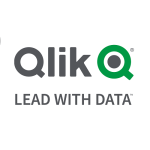What is our primary use case?
We currently use Domo for automation of our reports. I'm connected with a large company and I focus on talent acquisition and analytics. We are mostly pulling reports from Oracle BI, reports that are used by our talent acquisition staff. We connect our Domo database to OBI and pull the reports from there. The visualization and the rest of the analytics functions are stored in Domo.
How has it helped my organization?
Domo is a great help to our organization because, prior to Domo, we were using an Excel base. We were highly dependent on Excel, including manual entries and encoding of data. We were quite heavy on that. But as we shifted to Domo, most of our reports were automated and displayed real-time for our end users. It's a really great help with our business, here in the Philippines.
It saves a lot of time. Without Domo, we would need more manpower to support our reports. Before Domo, we had a report-focus which required a headcount of two and there are only two of us on this team. Eventually, most of our work time was diverted into the reports: extraction, preparation, and consolidation of all the data coming from individual Excel files. It saves a lot of time as well as cost because we don't need to hire more people to work on the reports.
What really helps us a lot with Domo is that we are able to focus on our core functions. We are heavily dependent on data collection, data gathering, and finalizing data. The clerical functions are being isolated or reduced, as we shift to Domo.
I don't have dollar numbers, but in terms of hours, we have certain reports that were being generated after four to five hours of work a day. But in Domo, we need just 30 minutes to create that report. That report is being published every day, so it really helps us a lot.
What is most valuable?
What makes me really fond of Domo is the ETL because it enables us to maximize a single platform for pulling reports and automating things. We can send the raw data from a third-party platform and do the rest of the ETL in Domo, including transforming data, adding columns, etc.
There is also a built-in viz mode which is really helpful for us. We can do computations there and, eventually, see the computation results in real-time.
We have been exploring the key functions which, for us, right now, include dashboard creation and using the Magic ETL. We are focused on them because we do a lot of stuff related to ETL. We are also doing some blending, data transformations from different data sources. It's quite helpful because we don't need to do it outside the Domo platform. Before that, prior to discovering the blend function, we used to do it in Excel first and then upload it to Domo. Since discovering that function, we just pull the raw data coming from a system and Domo does the rest of what needs to be done.
What needs improvement?
In terms of the dashboard that they have created, they can do better. If you are quite new to Domo, and you're not familiar with how to play with the buttons, the options, you might get lost.
They can further help the user by providing better customization and options. For example, for customizations, instead of displaying a dropdown, why not just have a button for selecting which filters to show? That would really help users to explore faster and understand the data better.
I'm also using Domo in mobile and it's quite impressive. However, there are no options to edit using your mobile. That's a limitation. In the future, they should consider adding the edit function in mobile.
In terms of the analytics, there is quite a limited set of options when using Domo. Whereas with Tableau we can perform heavy statistical computations, Domo doesn't have that capability. Domo is quite limited on that side. They may need to consider improving on that in the future.
But overall, what I'm seeing in the system right now is good. It really helps a lot in streamlining our processes and enables us to focus on our core function.
For how long have I used the solution?
I have been using Domo for about two years, altogether.
What do I think about the stability of the solution?
Domo is good, as long as you have a good internet connection. That's one of the challenges here in the Philippines, which is one of the countries with a slow internet connection. When I was working in another company with a good internet connection and bandwidth, we were able to access Domo very easily.
What do I think about the scalability of the solution?
I would rate the scalability at 7.5 out of ten. What differentiates other business intelligence software from Domo is that with other business intelligence software you can find tutorials on YouTube. For example, you can find several tutorials for Tableau on YouTube, but for Domo, I don't believe you can find any. It's difficult to find a training module for Domo, unless you are in the Domo University.
How are customer service and technical support?
I haven't tried contacting Domo's technical support since I joined this organization.
Which solution did I use previously and why did I switch?
We were using Excel prior to Domo.
All the organization's data is really important. With data you can measure how you are performing. The challenges in using Excel were, number one, integrity. Maintaining extra spreadsheets over time is really hard. Gathering and updating the data is really hard. Second, of course, is that there is a lot of manual work in Excel, unless you have someone trained to do queries or Visual Basic macros. That can help speed up the reports, but it may take time, again, to develop queries and programming for Excel. The driver for our switch to Domo was to speed things up and be able to deliver reports on time, accurately, and more reliably when compared with Excel.
How was the initial setup?
It's relatively complex to implement.
What was our ROI?
One type of ROI is that have been able to reduce the number of staff needed to prepare certain reports. Before using Domo, I would estimate that the company needed at least four people on the team to handle just the reports for our talent acquisition team. Now, we need closer to two staff. And that's just one team.
What's my experience with pricing, setup cost, and licensing?
I'm not sure about pricing, but I believe Domo is quite costly. Prior to joining this organization, I had a Domo license with my former employer and I think that license was around $500 to $600 annually. That was for a single license. I think it varies, depending on the organization that is acquiring Domo.
What other advice do I have?
Domo is a great tool, in my opinion. But the first thing that you need to consider is what kind of return on investment Domo can deliver. There are a lot of things that Domo can deliver. There are a lot of things that I haven't tried yet with Domo and I'm quite excited about trying them. But in terms of the ROI, there's a really great opportunity to save cost and time with Domo, particularly for if you are heavy on reports. If your organization needs certain data or reports in real-time, reports that help you to decide on certain issues, Domo can be helpful.
For the setup, the first thing that really matters to me is the importance of the fundamentals and training for users. If a user has not been well-trained to provide technical explanations to other users who eventually join the organization, it's quite difficult to understand Domo.
When I joined this organization, they had already been using for Domo but for less than a year. In terms of the reports, they are not utilizing it fully because they don't have any dedicated person to handle it. In addition, they don't have any trained personnel here, so there's no one to set up the reports, there's no one to explore the functionality of the system. It's quite a challenging role. We have been working on overcoming those issues.
As for increased usage in the future, we have a mandate from management that we're eventually shifting everything, all the reports, into this platform, because of its usefulness. It's quite good and I think the organization supports it.
It is being used globally in our organization. We have counterparts in other regions including India, Bulgaria, and the US. Our team alone has more than ten people who handle the business analytics. We are the ones preparing our records and data in Domo for all talent acquisitions for this organization.
I would rate Domo at eight out of ten. It's really quite helpful for me to use Domo. Domo helps a lot in terms of reports and streamlining the reporting process. It helps the organization to make decisions quickly.
Disclosure: I am a real user, and this review is based on my own experience and opinions.















